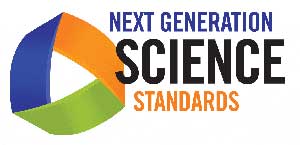Lunar Phases Lesson Plan
With next week’s full moon approaching quickly and school just back in session, we decided to share our a lesson plan for our Lunar Phases learning objective. The accompanying learning objective has eight games in total, so check them out.
Lunar Phases Lesson Plan Objective
Students will be able to:
- Name the phases of the moon and identify them based on a model.
- Identify which phase of the moon occurs in various locations in its orbit around Earth.
- Describe why only one side of the moon is visible from Earth.
Requirements
Time Required:
65 minutes
Materials Needed:
- Teacher with computer/internet access
- 1 computer/laptop/iPad per student with internet access
- Styrofoam cups (9 per group)
- Black marker
- Blue marker
- Phases of the Moon Worksheet
Teacher Preparation
- 1. Create Playlist 1, a 30-minute playlist, in Legends of Learning with the following game found in Lunar Phases: Lunar Wolves, and Ms. Rose and Lunar Phases.
- 2. Create Playlist 2, a 10-minute playlist in Legends of Learning with 5 assessment questions from the Lunar Phases learning objective.
- 3. Prepare 9 styrofoam cups (1 set of 9 per group) by coloring in the bottoms to represent the lunar phases. Use the blue marker to completely color the bottom of the ninth cup to represent the Earth.
- 4. Make copies of the Phases of the Moon Worksheet (available on the PDF version of this lesson plan) for each student.
Engage (5 minutes)

- 1. Students are divided into groups of 4-5. Each group is given a set of 9 cups. The bottoms of the cups are shaded with marker to represent the various lunar phases. The blue cup is the Earth.
- 2. Groups are instructed to place the blue cup in the center (bottom up) and surround the “Earth” with the cups showing the lunar phases in what they think is the correct order.
- 3. Students will keep their model on their table to be revisited later after playing the games.
Explore (30 minutes)
- 1. Hand out the Phases of the Moon Worksheet to each student.
- 2. Have students sign into Legends of Learning and enter your teacher’s code.
- 3. Launch Playlist 1 to the students.
- 4. Pass out the Phases of the Moon Worksheet.
- 5. While students are working through this game they will complete the worksheet.
Explain (15 minutes)
- 1. Students will get back together in their groups from the Engage activity and re-arrange their phases of the moon model based on the new knowledge they have gained.
- 2. Teacher will check that each group has an accurate model prior to moving on.
- 3. Teacher will review the answers to the Phases of the Moon Worksheet by drawing diagrams on the board. Teacher will ask students to come to the board and shade in what the moon looks like for each of the phases.
Elaborate (5 minutes)
-
- 1. Explain to students that no matter when we look at the moon, we are always seeing the same side of the moon. On Earth, we never see “the dark side” of the moon.
- 2. Show this video to students to help them understand the reason why:
- 3. Ask students: How do we know what is on the other side of the moon?
(Answer: Satellites have been sent to take pictures of the other side of the moon so we know what it looks like.)
Evaluate (10 minutes)
- 1. Launch Playlist 2 to your students. When they finish the assessment questions, any time left is freeplay.
- 2. Analyze student results to determine what concepts need to be a focus for reteaching.



 While there is great content built off of the NGSS DCI content system available, there is still a wide range of activities that teachers need to take on. Successful implementation requires a multidimensional approach to teaching to be the norm in every science classroom. This requires
While there is great content built off of the NGSS DCI content system available, there is still a wide range of activities that teachers need to take on. Successful implementation requires a multidimensional approach to teaching to be the norm in every science classroom. This requires 